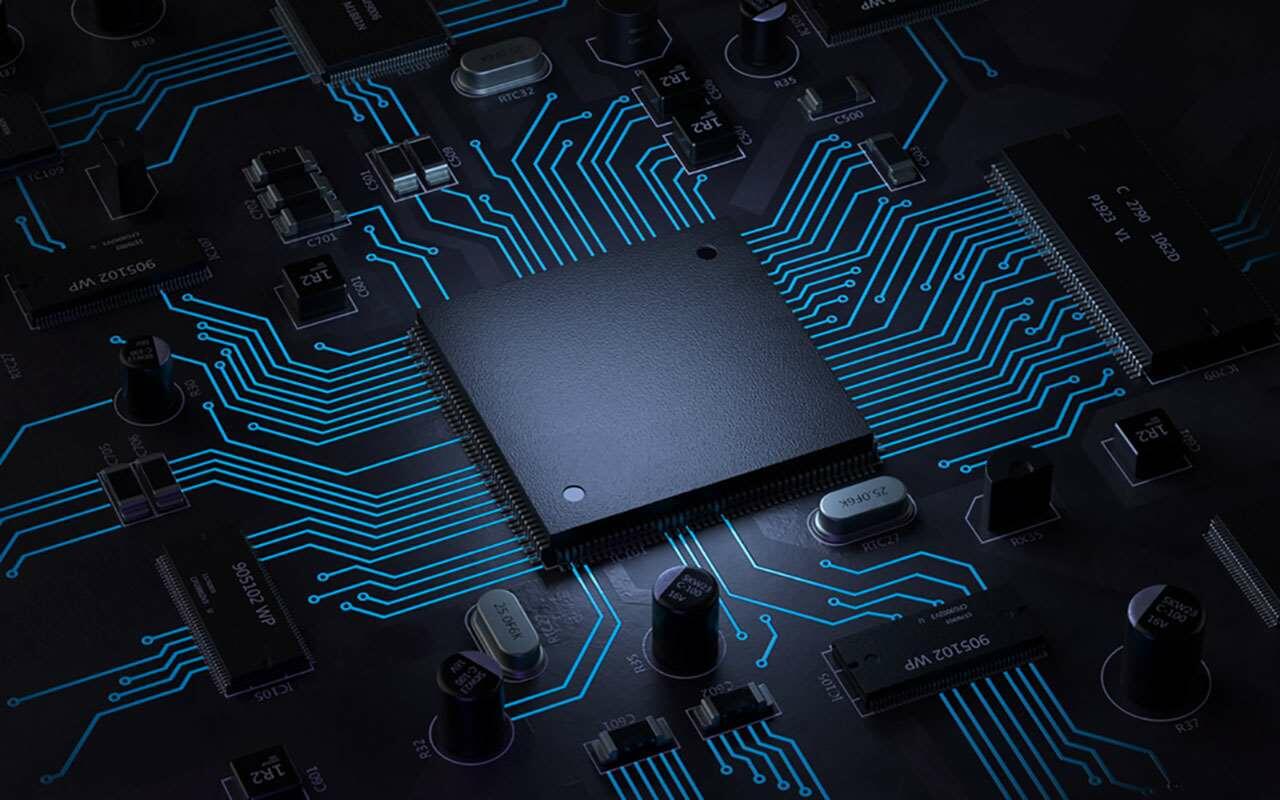Crypto Now Braced For A Massive Fed Bombshell After Silicon Valley Bank Meltdown Caused Bitcoin, Ethereum And USDC Price Chaos
Content
- Ethereum’s Launch
- Accelerate Your Crypto Portfolio with the Combined…
- How does it compare to Ethereum?
- Solana vs. Ethereum: Which is a Better Investment?
- Consensus Mechanism
- Will Ethereum Ecosystem Applications Explode Again In 2023?
- Buy Low & Sell High: Why Smart Investors Are Getting in on TMS Network (TMSN) Early
- Featured Post
Others remembered cases when other blockchains, including Ethereum, experienced outages, but still returned to normal operation and continued to enjoy popularity with blockchain users and developers. According to DeFi Llama, Ethereum’s TVL is up to $28.61 billion, while Solana’s TVL is only at $276.15 million. The difference between the two networks is almost 200% when it comes to TVL.
With the @riftersio Winter War and the final showdown of #Solana vs #Ethereum
my #RiftersWish this week, is to encourage deceit and backstabbing🗡️🖕Thus I use my Solana DemiGod power to boost support for the Ethereum chain @ethlizards
Why make their points x2, when you can x3!
— NTIA (@NTIAGamefi) February 26, 2023
This blockchain made it possible for users to borrow, lend, and receive interest on cryptocurrency without turning to banks or relying on other intermediaries. Yakovenko teamed up with a colleague from Qualcomm, Greg Fitzgerald, and they launched the Solana blockchain. Solana promised to address shortcomings such as low transaction speed, high fees, and scalability issues through a new Proof of History consensus algorithm developed by Anatoly Yakovenko. Considering that Solana can currently handle 65,000 tps at an average transaction cost of $0.00025, this blockchain has managed to keep its promise. If you’re a developer, you will be very interested in the underlying technology, which is the main topic when comparing Ethereum with Solana. Furthermore, each blockchain has its own consensus mechanism and has different ways of scaling.
Ethereum’s Launch
Solana is a newer platform, but it is quickly gaining popularity among developers and businesses. Solana’s focus on high-performance and low-latency applications has made it an attractive option for developers building applications that require fast transaction processing and scalability. Additionally, Solana’s ecosystem is growing rapidly, with a growing number of tools and resources available for developers building on the platform.
Ethereum vs Cardano is an article that compares these two blockchains to each other. If you want to understand which web3 real estate to build on, store your assets on or to invest in, understanding the business of blockchains is critical. And speaking of insiders, the FTX debacle revealed that FTX was one of Solana’s major supporters. Since 2020, FTX and Alameda Research had purchased 58 million SOL (15% of supply). This revelation has only further damaged the network’s reputation. Let’s look at how Ethereum and Solana compare with regards to blockchain performance and economic activity.
Solana is undeniably one of the most interesting and worthy competitors. The tech community is already calling Solana the Ethereum killer, but its developers don’t really agree with that. Larix has adopted a dynamic interest rate model and created capital-efficient risk management pools. The platform accepts all kinds of valuable assets, including crypto, stablecoins, and NFTs. The list of Ethereum-based DeFi projects and applications goes on and on. Other successful platforms include Compound, Etherisc, MetaMask, Curve, SushiSwap, Sovrin, etc.
Accelerate Your Crypto Portfolio with the Combined…
I think a lot of the EVM-based alternatives will have a much tougher time than Solana tbh. Has on-chain clock verification for trusted timestamps, rather than block height. We believe in AI and every https://xcritical.com/ day we innovate to make it better than yesterday. We believe in helping others to benefit from the wonders of AI and also in extending a hand to guide them to step their journey to adapt with future.
In comparison to Ethereum's average 14 TPS, second settlement time, massive carbon footprint, and single- to triple-digit dollar transaction fees, Ethereum is laughably inferior to Solana. However, there is a reason why Ethereum is still number one in the smart contracts race, as Solana's high performance has a heavy price. Solana and Ethereum are two of the most advanced and innovative blockchain platforms available today. Both platforms have their own unique set of features, capabilities, and limitations that make them suitable for different use cases. Ethereum’s well-established ecosystem, broad developer community, and smart contract capabilities make it a strong choice for developers who require a more flexible programming environment.

Its goal is to mirror traditional exchanges by matching buyers and sellers. With Serum, users can enjoy flexibility with pricing and order sizes when they submit orders to the exchange. This gives them complete control over their trading and transactions.
How does it compare to Ethereum?
However, Ethereum is currently transitioning to a proof-of-stake consensus mechanism, which is expected to reduce its energy consumption and increase its scalability. One of the most unique aspects of Solana is its multi-layered consensus system. The network leverages a Proof-of-Stake system to validate the state of the blockchain.
It should be noted that there are some similarities between the two markets, and therefore there are some overlapping qualities that you should be aware of. After all, you are trying to compare a couple of assets, but you also understand that the networks are trying to solve similar problems. Solana's token, or coin, is SOL, while Ethereum's coin is Ether . For various reasons, the much younger Solana is growing more popular than Ethereum. Despite its parabolic growth over the past year, Solana still has a significant way to go before it reaches the scale of Ethereum. Solana is ranked #8 in the world by market cap, while Ethereum is ranked #2.
- First, a market is created, then participants begin to place bets and trade.
- Solana is barely starting to receive support from financial institutions, and it might take a while to catch up to Ethereum’s colossal network size.
- The percentage of staked tokens to overall supply is high, which is a positive.
- The primary factor worth considering while comparing two blockchains is reviewing their market caps.
- The other major blockchain of the time was Bitcoin, but its capabilities were limited only to the issuance of virtual currency.
This is due to its PoH algorithm, which allows it to store only a few blocks rather than the entire ledger of transactions. Another major difference between Solana and Ethereum is network size. Currently, Ethereum has the largest number of nodes, with almost 28,000 nodes around the world. This makes it one of the most secure and reliable networks in terms of decentralization.
Furthermore, clogging the network can also negatively affect transactions, slowing the blockchain down and causing expenses to rise. However, with the recent upgrades, Ethereum is looking to rectify this. While Solana lacks the adoption of the Ethereum network, the assumption is that the project’s underlying technologies will allow it to scale in a far more efficient manner. Solana is of particular interest to developers and users who have grown fed up with the high gas fees and slow development pace of the Ethereum network. Perhaps the most prominent projects on the Solana network is Audius . Audius was originally implemented on the Ethereum network, but developers realized Solana’s network better suited their needs.
Solana vs. Ethereum: Which is a Better Investment?
Ethereum still reigns supreme, but it must be able to catch up to the technical innovations of “Ethereum Killers” such as Solana and Cardano to keep its position as top dog. By comparison, the DApp ecosystem on Solana is still in its very early stages, with only two projects exceeding $1 billion in total volume. The largest DApp on Solana is Raydium, an automated market maker designed to provide greater liquidity to traders.
Layer-two scaling solutions such as Polygon, Validium, and rollups have been introduced in order to address the scalability issues that exist on the Ethereum mainnet. This would be possible while still keeping Ethereum’s security intact. The smart contract capabilities of the Ethereum blockchain have garnered a lot of attention in recent years. It is able to support a range of programmability, which enables it to facilitate the development of a diverse range of intelligent contracts.
Consensus Mechanism
This is further done by adding timestamps to all transactions and tracking each one's order. This type of order sequencing is pivotally different from that in Bitcoin and Ethereum, where their transactions are not placed in a timely order. Presale tokens have quickly become a favorite among investors in the crypto market, with many offering a high potential for growth in a short period.

Another important factor that the developers consider is the architecture. The architecture defines the state of the Blockchain network and if it can modify variable values. Ethereum has undoubtedly one of the best stateful architectures among the competition due to which it is widely used for making apps on the Blockchain platform. The platform records all the transactions in the existing state and copies of the latest transactions are immediately coined to mirror the recent transactions. It is an effective network but is slower when compared to stateless networks. When it comes to Solana and Polygon, they are way ahead in terms of transaction speeds and offer 50,000-65,000 transactions per second which are a lot faster.
Will Ethereum Ecosystem Applications Explode Again In 2023?
On the surface, Solana seems to be a much more efficient platform. Solana’s secret sauce seems to be programmed into its consensus mechanism, and it is called Proof-of-History . Additionally, Solana Saga smart-phone shipments should be any day now. The Saga is an Android phone engineered to interact with the Solana blockchain and its dApps ecosystem. Initial news stirred positive sentiments, but lackluster preorders have made some wonder if the product is dead on arrival. Everyone’s talking about the Shanghai / Shapella upgrade, happening as these words hit the page.
Audius is a music streaming platform that hopes to connect fans and creators. Audius is also hoping to give much more revenue to creators than other large music streaming services. As of August 2022, the platform supports over 6 million monthly users and features artists such as Skrillex and MadeinTYO. what is solana crypto They use unique coding languages to create conditionals that automate tasks on the blockchain. A conditional is typically an “if” statement that automatically does something when a certain event occurs. Meanwhile, the blockchain world is not standing still and offers many alternatives to Ethereum.
Ethereum’s higher price point might be a barrier to entry for some investors. These blockchains are very similar because Solana was designed to compete with Ethereum. So if you’re an investor who believes in both projects and you don’t have $1,200 to invest, Solana presents a cheaper alternative. Solana doesn’t have the same scalability issues thanks to its PoH protocol. Since Solana users aren’t competing for block space to process transactions, their average fee per transaction is typically a small fraction of a penny.
